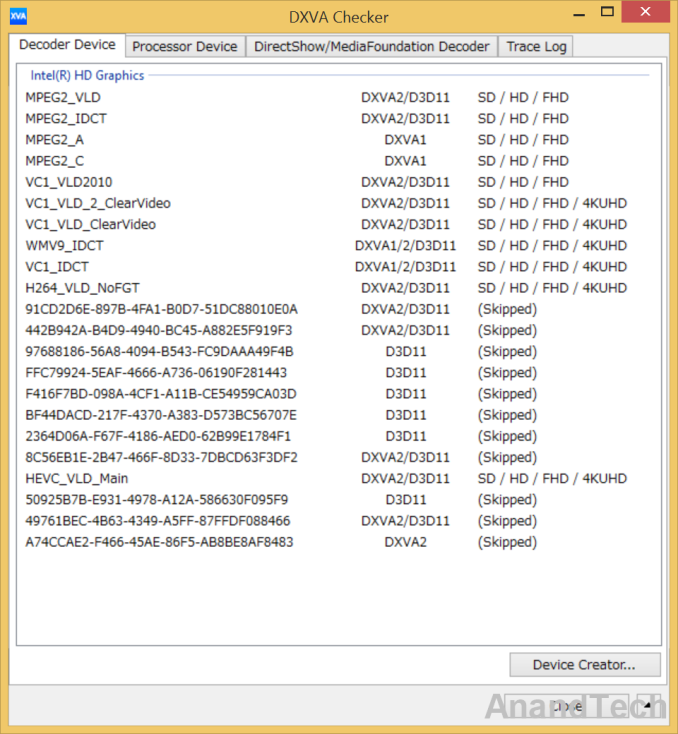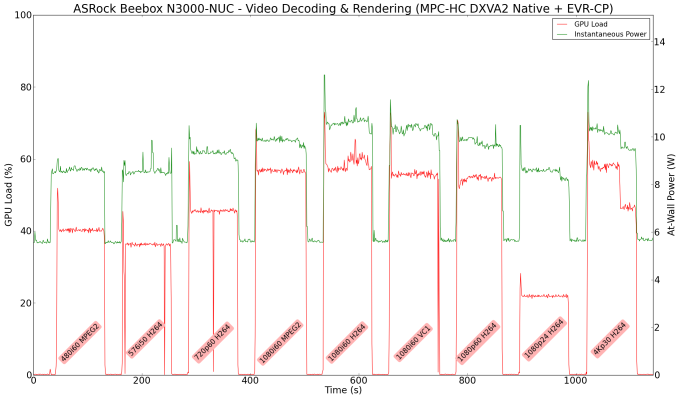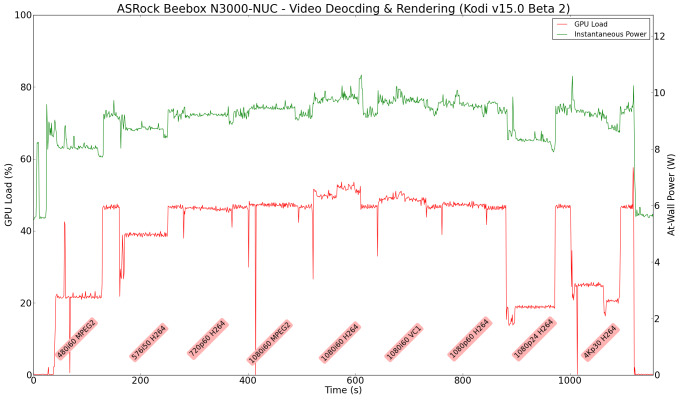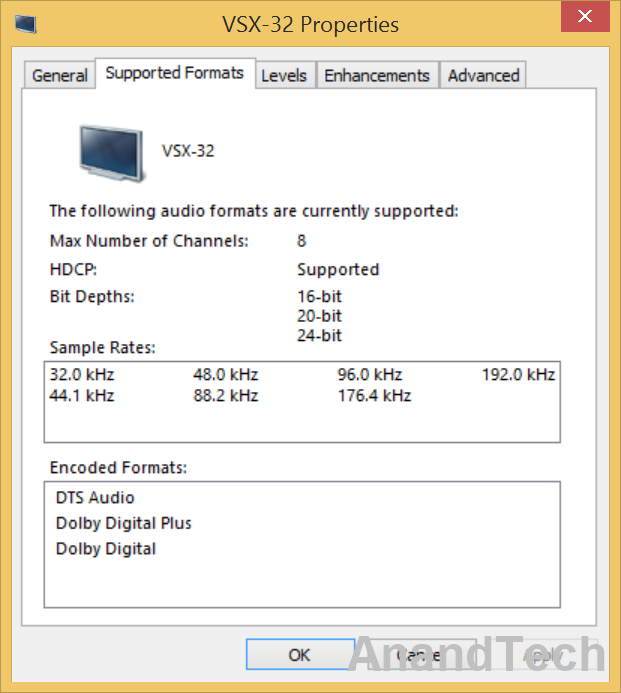ASRock Beebox Review: A Fanless Braswell UCFF PC
by Ganesh T S on July 14, 2015 8:00 AM ESTHTPC Credentials
Given the Beebox's fanless nature and the presence of Intel HD Graphics, we expect many purchasers to use it as a media playback machine / HTPC. Given the specifications, it is quite clear that we are not looking at a madVR capable machine, but one targeted at the entry-level / average HTPC user or someone looking for a HTPC to put in a second or third room (non-primary HTPC). There are two HTPC aspects that we will explore in this section, one related to network streaming (OTT services), and the other related to local file playback. Prior to that, we have a small sub-section dealing with refresh rate accuracy.
Refresh Rate Accurancy
Starting with Haswell, Intel, AMD and NVIDIA have been on par with respect to display refresh rate accuracy. The most important refresh rate for videophiles is obviously 23.976 Hz (the 23 Hz setting). As expected, the ASRock Beebox N3000-NUC has no trouble with refreshing the display appropriately in this setting.
The gallery below presents some of the other refresh rates that we tested out. The first statistic in madVR's OSD indicates the display refresh rate.
Network Streaming Efficiency
Evaluation of OTT playback efficiency was done by playing back our standard YouTube test stream and five minutes from our standard Netflix test title. Since YouTube now defaults to HTML5 for video playback, we have stopped evaluating Adobe Flash acceleration. Note that only NVIDIA exposes GPU and VPU loads separately. Both Intel and AMD bundle the decoder load along with the GPU load. The following graph shows the power consumption at the wall for playback of the HTML5 stream in Mozilla Firefox (v 38.0.5).

GPU load was around 31.74% for the YouTube HTML5 stream and 7.6% for the steady state 6 Mbps Netflix streaming case.
Netflix streaming evaluation was done using the Windows 8.1 Netflix app. Manual stream selection is available (Ctrl-Alt-Shift-S) and debug information / statistics can also be viewed (Ctrl-Alt-Shift-D). Statistics collected for the YouTube streaming experiment were also collected here.

The ASRock Beebox doesn't seem to be the most power-efficient fanless PC available, but it does seem to be the best when it comes to models with replaceable RAM and internal storage.
Decoding and Rendering Benchmarks
Prior to testing out the decoding and rendering performance, we take a look at the DXVA decoding support available via Intel's Braswell GPU drivers.
The above screenshot shows that there is hardware acceleration available for MPEG-2, VC-1, H.264 and HEVC. However, there is no HEVC Main10 support.
In order to evaluate local file playback, we concentrate on EVR-CP and Kodi. We already know that EVR works quite well even with the Intel IGP for our test streams. In our earlier reviews, we focused on presenting the GPU loading and power consumption at the wall in a table (with problematic streams in bold). Starting with the Broadwell NUC review, we decided to represent the GPU load and power consumption in a graph with dual Y-axes. Nine different test streams of 90 seconds each were played back with a gap of 30 seconds between each of them. The characteristics of each stream are annotated at the bottom of the graph. Note that the GPU usage is graphed in red and needs to be considered against the left axis, while the at-wall power consumption is graphed in green and needs to be considered against the right axis.
Frame drops are evident whenever the GPU load consistently stays above the 85 - 90% mark. In addition to tracking that aspect in the graphs below, we also get an idea of the system's power efficiency for decode and playback of some common codecs.
In both cases, the ASRock Beebox / Braswell has no problem in playing back our test streams without frame drops. Note that we have not tested out HEVC decoding and rendering - we still believe that, despite the 4K output capabilities, the core platform needs a more well-rounded set of features before it can be recommended for a 4K HTPC setup. Braswell doesn't have HDMI 2.0 or HDCP 2.2, and can't decode HEVC Main10 profile videos even in hybrid decode mode. However, given the $220 price, it is not a big deal.
HDMI Audio
One of the issues plaguing early Bay Trail-based units was the absence of HD audio bitstreaming support (DTS-HD MA and Dolby TrueHD). Unfortunately, there seems to be a similar issue with Cherry Trail. The Intel drivers for the Beebox don't have HD audio bitstreaming support, and it is not clear when (if at all) Intel would provide Windows drivers with the feature enabled.
It remains to be seen if the Linux case is any different (the OpenELEC beta that I tried late last month didn't run on the Beebox).




















45 Comments
View All Comments
HideOut - Tuesday, July 14, 2015 - link
Hopefully no one posted this but with multiple pages I got tired of looking. But shame its only 1x1 AC instead of 2x2 :(mikato - Friday, July 17, 2015 - link
I think I would build my own for an HTPC at this point still. Quicker, better video performance, more storage - sacrificing a little extra power usage, bigger size, and more cost. As long as I can build one that I can carry around in my car somewhere, and won't make much noise... Mostly I don't want to put up with a slow machine.Teknobug - Monday, July 20, 2015 - link
This wouldn't make a good HTPC with the lack of bitstreamjgonzo432 - Thursday, July 23, 2015 - link
Do you know what the 14-pin header next to the SATA connector is for? Also, is it safe to assume that any m-pcie card can be used in the top m-pcie/m-sata slot (i.e. m-pcie to usb instead of flash storage)?Helios61 - Saturday, September 5, 2015 - link
Could anyone confirm missing scaling option (Over- / Underscan) on HDMI/1080p/50Hz with current graphic driver (10.18.15.4256)?